A calcium channel is an ion channel which shows selective permeability to calcium ions. It is sometimes synonymous with voltage-gated calcium channel, although there are also ligand-gated calcium channels.
The Piaroa–Saliban, also known as Saliban (Salivan), are a small proposed language family of the middle Orinoco Basin, which forms an independent island within an area of Venezuela and Colombia dominated by peoples of Carib and Arawakan affiliation.
Calcicludine (CaC) is a protein toxin from the venom of the green mamba that inhibits high-voltage-activated calcium channels, especially L-type calcium channels.
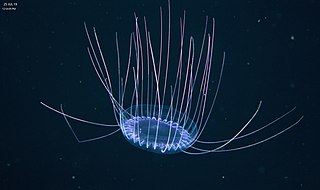
Solmissus, or dinner plate jellyfish, is a genus of hydrozoans. Its species are unique among cnidarians in that they actively hunt for prey as opposed to passively waiting for plankton to pass by. They are found in the deep waters of Monterey Bay, California. They are most likely to be found in the deep sea, mid water. They grow to be 20 cm (7.9 in) in diameter. These hydrozoans feed on gelatinous zooplankton, including salps and doliolids, ctenophores, jellyfish, and copepods.. However, Solmissus may be limited to feeding on soft-bodied prey by the type of nematocysts on their tentacles (Mills).
Maipure, was a language once spoken along the Ventuari, Sipapo, and Autana rivers of Amazonas and, as a lingua franca, in the Upper Orinoco region. It became extinct around the end of the eighteenth century. Zamponi provided a grammatical sketch of the language and furnished a classified word list, based on all of its extant eighteenth century material. It is historically important in that it formed the cornerstone of the recognition of the Maipurean (Arawakan) language family.
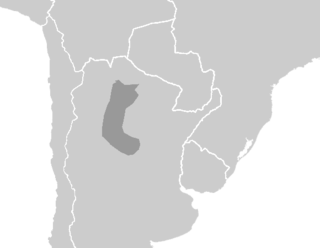
The two Lule–Vilela languages constitute a small, distantly related language family of northern Argentina. Kaufman found the relationship likely and with general agreement among the major classifiers of South American languages. Viegas Barros published additional evidence from 1996–2006. However, Zamponi (2008) considers Lule and Vilela each as language isolates, with similarities being due to contact.
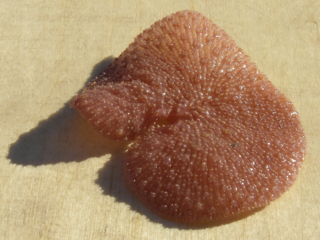
Renilla is a genus of sea pen. It is the only genus within the monotypic family Renillidae.

Corynactis is a genus of colonial anthozoans similar in appearance to sea anemones and in body format to scleractinian stony corals. These animals are cnidarians in the family Corallimorphidae. Large unidentified polyps of this genus feed on the crown-of-thorns seastar Acanthaster planci and may help control the crown-of-thorns population.

Lintneria is a genus of moths in the family Sphingidae, containing the following species:
Betoi (Betoy) or Betoi-Jirara is an extinct language of Colombia and Venezuela, south of the Apure River near the modern border with Colombia. The names Betoi and Jirara are those of two of its peoples/dialects; the language proper has no known name. At contact, Betoi was a local lingua franca spoken between the Uribante and Sarare rivers and along the Arauca. Enough was recorded for a brief grammatical monograph to be written.
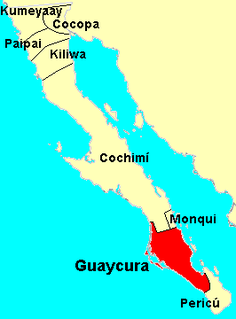
Waikuri is an extinct language of southern Baja California spoken by the Waikuri or Guaycura people. The Jesuit priest Baegert documented words, sentences and texts in the language between 1751 and 1768.

Aulactinia is a genus of sea anemones in the family Actiniidae.

Briareidae is a family of corals, a member of the phylum Cnidaria.

Isanthidae is a small family of sea anemones in the class Anthozoa.

Metridiidae is a family of sea anemones in the order Actiniaria.
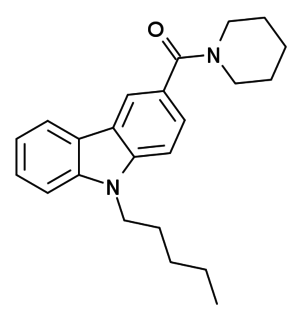
NMP-7 is a drug which acts as both a non-selective agonist of the CB1 and CB2 cannabinoid receptors, and also as a blocker of T-type calcium channels, the target of anticonvulsant drugs such as ethosuximide. NMP-7 has an agonist EC50 of 96.9nM at CB1 and 10.5nM at CB2, and an IC50 of 1.84μM for blocking Cav3.2 T-type calcium channels. In animal studies it produces potent analgesic effects in a variety of different tests.
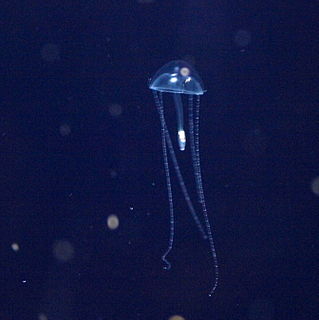
The Geryoniidae are a family of hydrozoans in the order Trachymedusae.

Renilla muelleri is a species of sea pansy. It has been reported from the Gulf Coast of the United States, notably the Florida panhandle, but is also reported from the eastern coast of South America. It is thought to be a euryhaline littoral species, found to a depth of up to 150 meters.
Duho is a proposed language family of South America, uniting two proposed genetic groupings, Hodi–Saliban and Ticuna–Yuri. This language stock was proposed by Marcelo Jolkesky (2016), based on his previous but now disclaimed Macro-Daha stock which had also included the Andoque–Urequena languages.
Acontiophoridae is a family of sea anemones.











